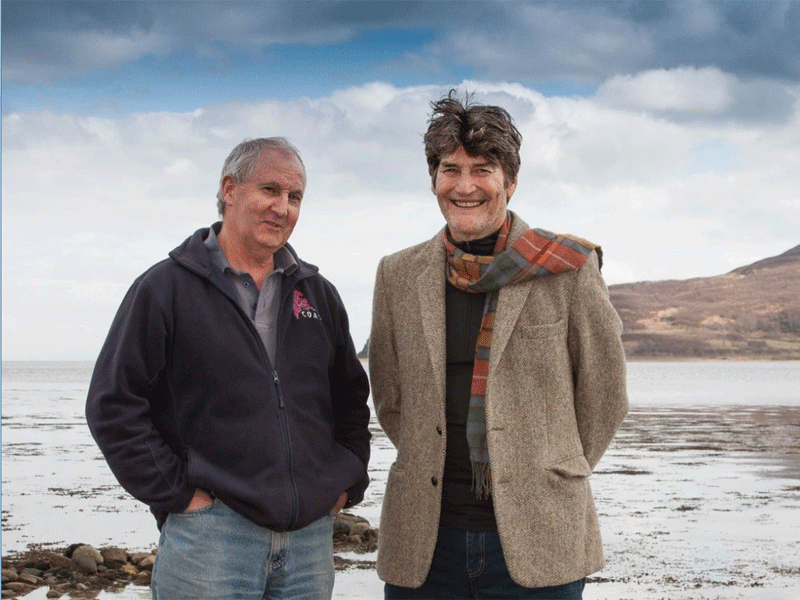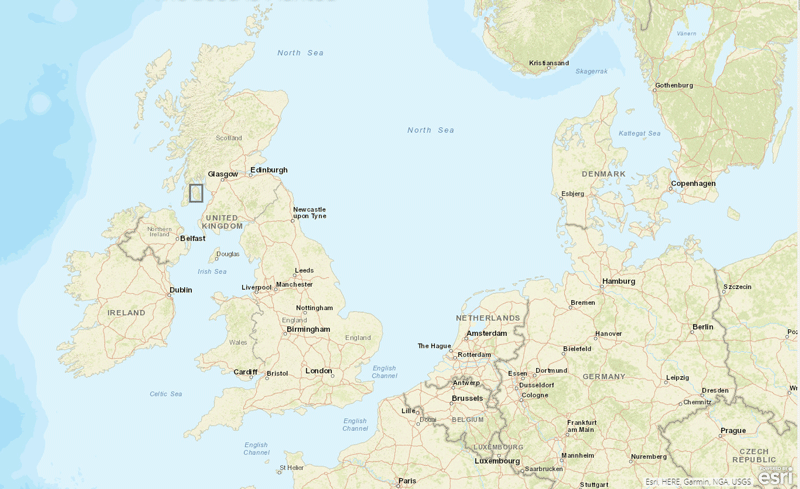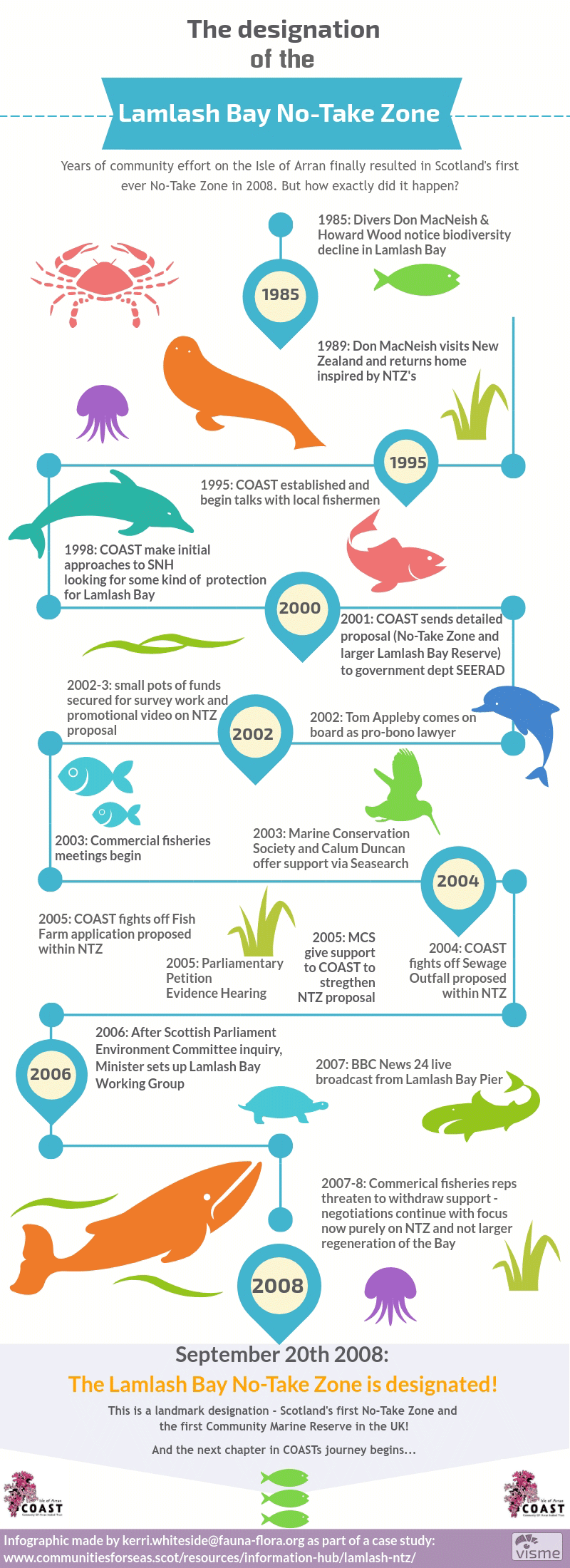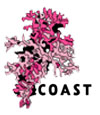Case Study
The establishment of the 1st Community Managed Marine Protected Area in the Isle of Arran, Scotland
Contact name
Kerri Whiteside & Howard Wood
Institution name
COAST - Community of Arran Seabed Trust
Region & country
Lamlash Bay, Isle of Arran, Scotland.
Summary
In 2008 Scotland’s first No-Take Zone (NTZ – an area closed to all forms of marine life extraction) was designated off the east coast of the Isle of Arran, covering an area of 2.67km² within Lamlash Bay. Its designation was the direct result of pressure brought to bear by the local community group, the Community of Arran Seabed Trust (COAST), being the only area of Scottish seabed where both mobile and static gear closures are in place as a direct result of local grass-roots pressure. The community campaign lasted 13 years, it marked a significant challenge to the status-quo of the Scottish Government’s management of fisheries and set the path for the establishment of other Marine Protected Areas in Scotland.

Howard Wood (left) and Don Macneish (right), founders of COAST
Photo by Kerri Whiteside

Map with the location of Isle of Arran
Photo by Kerri Whiteside

Lamlash Bay No-Take Zone Infographic
Infographic by Kerri Whiteside
Background of the project
The residents of Arran could observe that all was not well within the surrounding seas of their island. The decline on fish stocks and impoverishment of the surrounding marine environment along the years were evident and the main reason was the activity of off-island commercial trawlers. The community of Arran did not count with enough political support to stop commercial fishing In 1995, inspired in New Zealand’s not take zones, two community members, without any background in marine sciences. The establishment of the 1st Community Managed Marine Protected Area in Lamlash Bay, Scotland, started to raise awareness among the island inhabitants on biodiversity decline within the bay and founded COAST – the Community of Arran Seabed Trust.
It was necessary to find a proper management system to stop the decline of fish stocks and deterioration of the marine environment in Lamlash Bay. For this, it was critical to get sufficient knowledge on the Scottish political system and designation of NTZ process in order to be successful and achieve representation of the local community on the decision making process at the same level of the commercial fishing sector.
Furthermore, it was necessary to get support from the Government for other types of businesses and users than commercial fishermen, like sea anglers, tourism operators and small scale fisheries.
Solution and actions taken
Create a regeneration area or nursery area through the establishment of a No Take Zone (NTZ) which additionally would help reinforce future stocks for commercial fisheries.
The creation of the Arran’s Marine Protected Area was a long lasting process that went through different stages during 13 years.
In 1995, the divers Don MacNeish and Howard Wood, inspired by New Zealand Marine Protected Areas, started to organize meetings with fishermen and local groups to raise awareness on the deterioration of the marine ecosystems present in the area. COAST was founded and started to liaise with the Scottish Government, acknowledging their duty to manage Scottish seas sustainably in the public interest (and current failure in doing so), to explore the viability of establishing a protected zone inside the bay.
In 1998, in a meeting with Arran based commercial fishermen, the idea to create a small closed area in Lamlash Bay was agreed and a proposal with relevant documentation was presented to the Inshore Fisheries Department (1999) for the creation of the NTZ. In the coming years, COAST acquired a pro-bono lawyer to support the process.
In 2003 COAST, which was until the date entirely funded by its committee members’ personal funds, was awarded their first grant and started to train local divers to carry out environmental surveys and create the base line of marine biodiversity of the area. During this year, COAST also started to hold meetings with commercial fisheries associations and, during the following years and supported by the data collected through the environmental surveys, fought against the imposition of a sewage outfall and a fish farm in the area. Furthermore, COAST started getting greater visibility through the broadcasting of a documentary produced by the BBC.
In 2004, lobbying for the creation of the reserve continued through to a Parliamentary Petition which called for support of COAST’s proposals for the creation of the NTZ and further restrictions on mobile fishing gear within the rest of the Bay.
In 2005, COAST’s proposed NTZ was acknowledged in the Arran Local Plan (the first marine site to be acknowledged in a Local Plan). In 2006 the Lamlash Bay Working Group was formed. In the coming years, two films (“The Bay” and “Caught in Time”) were produced and further media coverage was given to the case.
Finally, in September 19th 2008, after changes in the political landscape of the Scottish Government, disagreements with commercial fishermen that threatened to withdraw their support for the creation of the NTZ, and a public consultation process, the first Community Marine Conservation Area was created.
Other institutions or parties involved
- Clyde Fishermen’s Association;
- Marine Conservation Society;
- Scottish Executive;
- Scottish Association for Marine Science (SAMS);
- Scottish Natural Heritage;
- Clyde and South-West Static Association;
- Commercial fishermen on Arran;
- Arran Sea Angling Association;
- North Ayrshire Council;
- Millport Marine Station;
- University of York;
- Scottish Environment Protection Agency;
- Esmeé Fairbairn Foundation.
Results
- Recovery of marine fauna;
- Community aware and engage with the protection of the sea;
- Education possibilities;
- It was the starting point for a Government shift towards the designation of MPAs in Scotland – and the adoption of a process which allows third parties (such as community groups) to propose sites.
Challenges
- The lack of clarity within Government management systems made the whole process difficult and slow;
- Commercial fisheries associations seemed to have the control via their political influence over the marine resources management and were reluctant to allow local communities to take part in fishing policy;
- At the moment of presenting the NTZ proposal, COAST recognized that there were indeed two contrasting camps, conservation and fisheries, which appeared to have been set against one another;
- The existing legal framework impeded the NTZ to be considered in the Arran Local Plan, as it only applied to developments above the low water mark but not those present below it;
- Industrial and infrastructure applications within the area which threatened the marine environment including salmon farming and sewage outfalls.
Lessons learned
- Developing relationships with local Members of the Scottish Parliament (MSP) and Members of the Parliament (MP) to gain political influence and help guide COAST through the maze and complexities of the political system was paramount;
- In order to be progressive and forward thinking COAST incorporated women on their Board;
- It is important to seek media attention and drive home the message of the sea being a publicly owned space; a common resource for all, not just industry or those with a traditionally strong influence;
- Making personal contact with MSP’s, MP’s and Local Councilors was vital to clearing the log-jam we had been forced into and to paving the way to real change;
- The involvement of the local community in citizen science campaigns, initially designed to monitor and create a base line for the designation of the NTZ, helped building the reputation of the local community as a source of knowledge that could be used for management decisions;
- Before starting on a project where others have failed, first familiarize yourself with the pit falls of others. Consider all new options; be aware of the particular opportunities at that current time. Fully understand the systems especially politics, the media and the Law;
- Projects bound to personalities are mortal and prone to personal frailties. Because COAST was a multi headed organisation and no one person was responsible for the project, it could absorb all sort of flack, while individual members were talking to political foes and forging alliances;
- Any functioning community is not necessary geographic but a group of like-minded people joined to a common purpose;
- A wide network of members results in political capital or potential votes.
Other resources
-
The Lamlash Bay No-Take Zone A Community Designation Case Study
https://ffi.maps.arcgis.com/apps/Cascade/index.html?appid=70448e12ec3c45139beca33dfc990b7aRead the whole Case Study on the creation of Scotland´s 1st community managed Marine Protected Area
-
Video "Arran and the Sea: a community story"
https://youtu.be/fK5u0OZS3v4Watch the video "Arran and the Sea: a community story" with further information of the creation of COAST and the Marine Protected Area
Contact name
Kerri Whiteside & Howard Wood
Institution name
COAST - Community of Arran Seabed Trust
Website(s)
